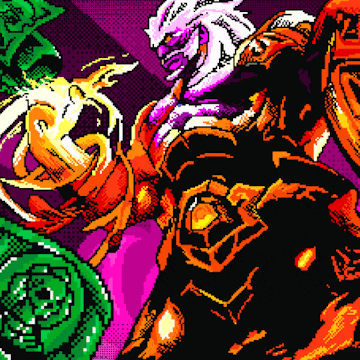Round Robin CS:GO – Why it Sucks and How to Fix It
Leagues and round robin group stages are a mainstay fixture of traditional sports, and they also play a significant part in popular events like the World Cup. So why has it always been such a spectacular snoozefest in CS:GO? Though Striker's classic article on HLTV called it "undoubtedly the most flawed", most of the kinks could be ironed out by TOs with minor alterations to existing formats. Let’s take a look at why it works so well in other sports and what can be done with it to make it more appealing in Counter-Strike!
Why leagues work in traditional sports
Professional sports are an amalgamation of spectacle and skill, and the choice of formats in different events highlights the uneasy alliance between broadcasts and competitors. How much is a highlight reel worth over rewarding consistency? Each traditional and esport has a different answer to this question. Leagues and round robin group stages in general fall on the far side of this spectrum, maximizing the sample size and fairness at the expense of viewer convenience.
Since each team plays the same number of matches and gets to go up against every possible opponent, it’s quite difficult to fluke through to the playoffs with a single upset win. It also means that every participant has the same amount of time in the spotlight and will have a chance to showcase their skill against everyone else in the group. As an added consequence, you also don’t have to rely on seeding to ensure an appropriate distribution of talent across the bracket.
Though round robin is adapted in a wide variety of traditional sports, we’re going to use football (for American readers out there, that soccer thing) as our main point of comparison. The reason for this is simple: it is a low-scoring sport, with an average of circa 2.6 goals per match. As such,
- goal difference becomes a reliable metric for tiebreakers
- draws are a regular enough occurrence to account for
In football, you get 3 points for a win and both teams get one for a draw, which serves to discourage stalemate situations. Two draws are worth less than a win, meaning you already have a clearly identifiable “tiebreaker” built into the system. It also creates an imbalance between teams with different results, reducing the odds of symmetrical outcomes (which isn’t a case in formats where a winner gets one point and a draw is worth 0.5, like in the case of chess tournaments).
Competitions are also envisioned in a way that there’s almost always something to play for. Your team will either be fighting for the title, a spot in the first or second tier of international club competition (with a third tier also to be introduced in the near future) or working as hard as they can to fight against relegation. A long season also means that you’ll inevitably end up with disparate segments of the field who will all end up with different objectives for the competition, with different goals to play for.
Larger squads also introduce the concept of rotation, which only becomes relevant when there are many matches to play, forcing coaches to prioritize between matches. (Then again, this mainly works because fan loyalty is more about the club than the players, which isn’t the case in esports. Just ask the CEO of AVANGAR how many fans they have left from the Major now that they sold the roster to VP.) Even in four-team groups like the Champions League, the playoff seed on offer for first place and a Europa League spot for the third-place finisher ensures that almost every game has something riding on it. (The World Cup’s existing format substitutes this with national pride with fairly decent success.)
The benefits of football’s low-scoring nature also show in knockout competitions, which is worth looking at separately before we make further comparisons with esports. Say what you will about the away goals rule in the Champions League (a tiebreaker many consider antiquated and counter-productive in the modern game), it does serve to generate unique “game states” for the second leg and dramatically limits the number of scenarios where the tie goes to extra time. It also makes it immediately clear which result favors a particular team, and fans and commentators alike can go into the game with a full understanding of the dynamics. If you won 2-1 away from home, you are still winning if you concede once. If you lose the match 2-3, you’re out. Only the mirror result will lead to extra time and potentially a penalty shootout. No flowchart needed for this one.
Why leagues don’t work in Counter-Strike
The format is not entirely alien to esports: the group stages of The International always featured the full round robin bracket and certain DPC majors of the 2018/19 season also used it to determine playoff seedings. In Counter-Strike, ESL’s Pro League and BLAST’s old Pro Series remain the main outlets for it, and it hasn’t exactly caught the hearts and minds of the community. In a way, all positives of a round robin format are missing from these endeavors: each game feels the same and irrelevant, sometimes they are total dead rubbers, and the tiebreakers are either impossible to figure out at first glance, nonsensical in the context of CS, or both.
Since ties are such a rarity in CS – and traditionally, they are resolved in overtime –, they are much less potent a tool in delivering standings. Crucially, Counter-Strike is also an asymmetrical game. The difference between CT and T sides on different maps is night and day, and it’s impossible to use rounds won as a realistic metric in a series where a CT-side shutout led to a 16-3 win on Nuke, followed by a closely fought 16-13 win on Mirage. In the first case, you forfeited basically a quarter of potential rounds played. This forces tournament organizers to use obscure tiebreaker rules, and we’ve seen many examples of desk hosts struggling to figure out the list of potential outcomes, making the whole experience feel like a farce.
However, introducing a different kind of tiebreaker and borrowing a set of concepts from traditional sports like football can make round robin group stages just as interesting in CS as it is in other games. Currently, the most popular group stage format in Counter-Strike is still GSL, which is basically a simplified double-elimination bracket. Its main weakness is that you cannot win your group after losing your opening game, which can be especially egregious at tournaments where they keep the first match as best-of-ones due to scheduling reasons (here’s looking at you, DreamHack). The multitude of leagues springing up in 2020 means that innovating on tournament formats is a great way to stand out – making this a worthwhile subject to explore.
Potential solutions
So how can you differentiate between league games in esports? There’s a simple way to emulate “home” and “away” matches without forcing teams to fly all across the world for no reason like the bigwigs of the Overwatch League decided: we are already familiar with the parlance of the “home map”, the one teams are best-equipped to play and fight on. No wonder it usually gets banned in best-of-three (and especially in best-of-one) series.
So how about a system where each match is a best-of-two, and the opening map is always the “home” team’s designated “home map”? This way, you can’t just ban out Astralis’ Nuke, and the fans would get to see them play on it on a regular basis. Just like the backdrop of Old Trafford is immediately identifiable with Manchester United, so would the contours of the nuclear plant with the Danes’ excellence, even more so than they are now. You could even make some texture changes on the maps to accompany this as long as it does not impact the gameplay experience. A set number of maps also helps with scheduling.
Win both maps and you three points. Split the maps and get one point each. It also isn’t an issue when both teams have the same “home map”: just let the “home team” decide which side they want to start on. (Again, there’s precedent for this in the world of sports, with teams like AC Milan and Inter Milan sharing the same stadium. You go in the away team’s locker room when it’s your turn to visit. It actually does have a psychological effect.) This also enables “away map wins” as a simple and reliable first tiebreaker.
How can you make every match count in a CS:GO tournament? ESL’s currently popularized double-elimination format already grants a semifinal spot to the team that tops the group, so you can just give a bye to the team which finishes on the top of the bracket. Finishing on the bottom would either eliminate or relegate you from the competition, depending on the format. It’s the part in-between the two which has caused such heartache to TOs. Like third-place deciders, it’s just tough to make the players and the viewers care.
For spectacle purposes, you could emulate something like the FA Cup at the end of the season, which serves as a separate competition with a standard knockout bracket featuring a much wider pool of participants. It could be something like a ‘last call’ event for the teams that failed to qualify for the playoffs through the league, with one spot in the finals to fight for, with perhaps an added. Since those who already qualified wouldn’t participate (and why it makes sense to run this after the regular season instead of concurrently with it like in the case of domestic football cup competitions), you can either fill up the bracket by extending extra invitations to lower-ranked teams (again, ESL has a straightforward way to establish a system like this, but the uproar over the specifics of the LANXESS Agreement suggests they are moving in a very different direction), or if franchising limitations don’t make this a viable approach, you can just give a bye to those teams that finished in the top half of the bracket. This would also serve as a partial solution to the meaningless midtable games near the end of the season.
Something also has to be said about the general sensibilities of the esports fandom and commentariat. So far, the landscape has tilted more towards what I’ll simplistically refer to an “Americanized” way of handling big sports events, with further emphasis on the spectacle and dramatic deciders rather than a granular growth of storylines over an entire season. The International’s grand final, a single best-of-five series, hands out more prize money than the entire DPC combined, and the achievements of a squad like Team Secret across the DPC season are immediately reduced to an asterisk. From a product(ion) perspective, it’s a matter of taste and preference, nothing more. You still see “decider” matches emerge organically in football leagues, and it’s a matter of marketing to build it up in a way you’d go about promoting a grand final but with a higher overall volume of content (and higher sporting integrity) to work with across the league as a whole.
Maybe you see the future of esports as a WWE-style spectacle, with vague notions of competitiveness overshadowed by non-stop excitement and breathless coverage of a big game. If that’s the case, round robin formats will never appeal to you. Nevertheless, the success and reach of competitions like the Premier League suggest this is an approach worth pursuing in Counter-Strike as well as other esports.
Photo credit: HLTV
Read more
Toss a coin to your HLTV, a source sorely missing in other esports










